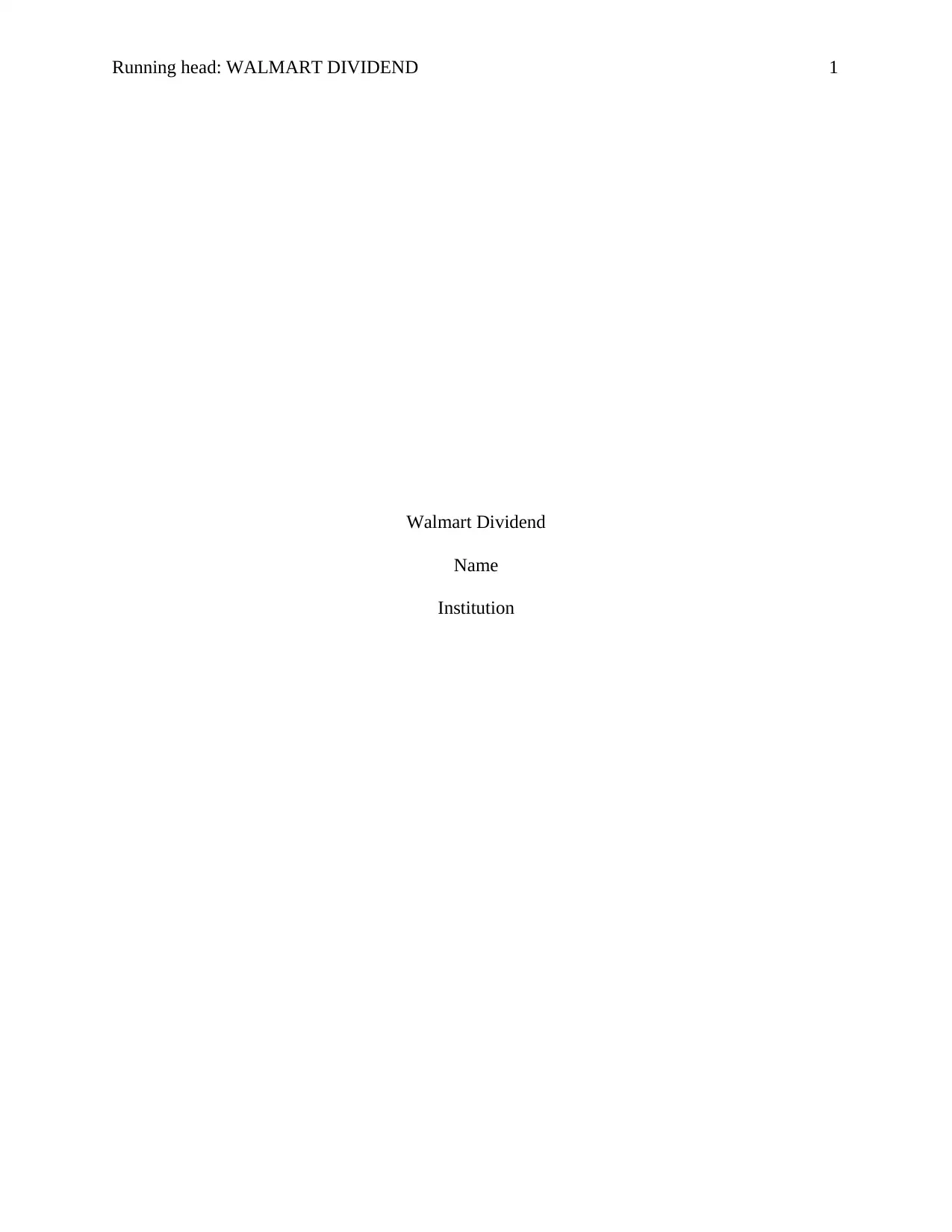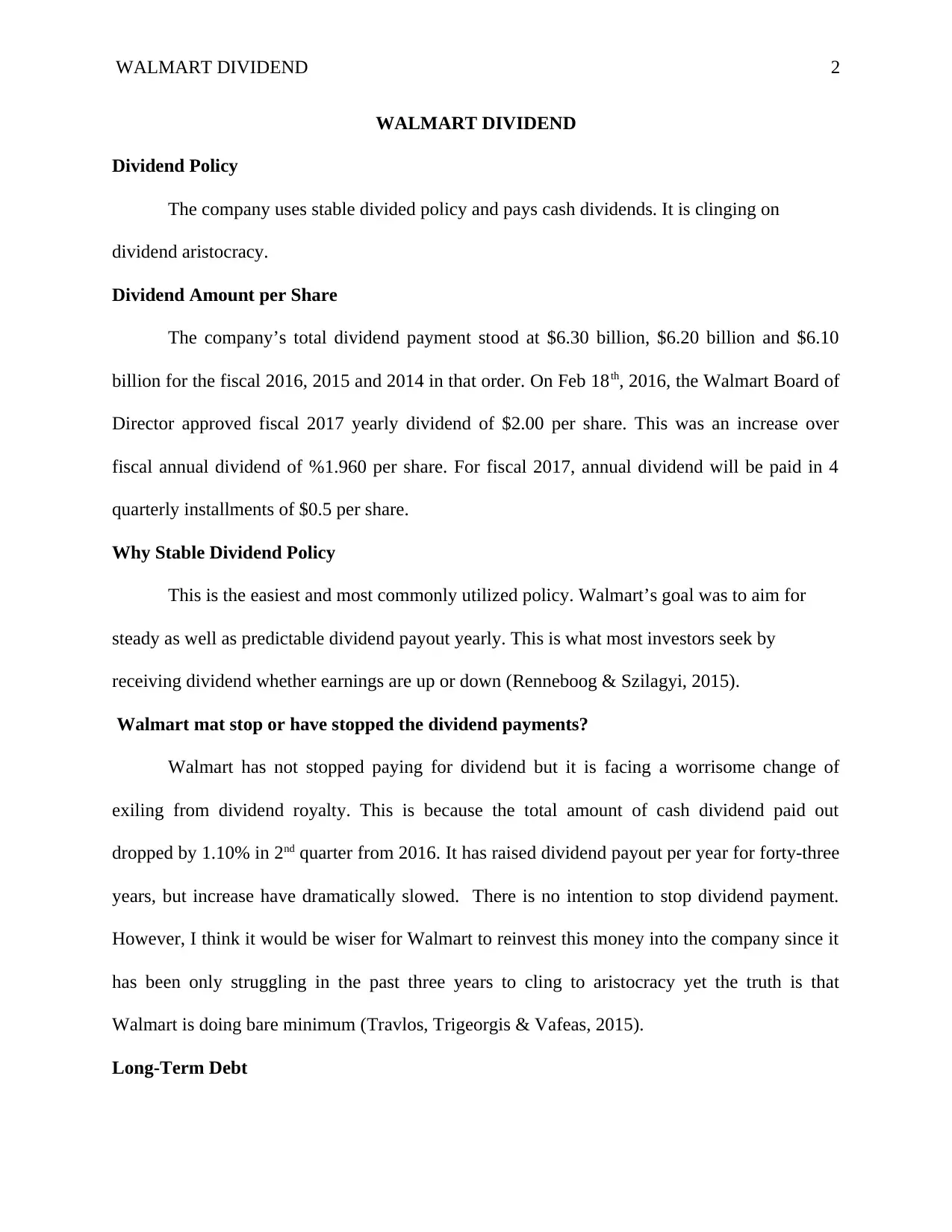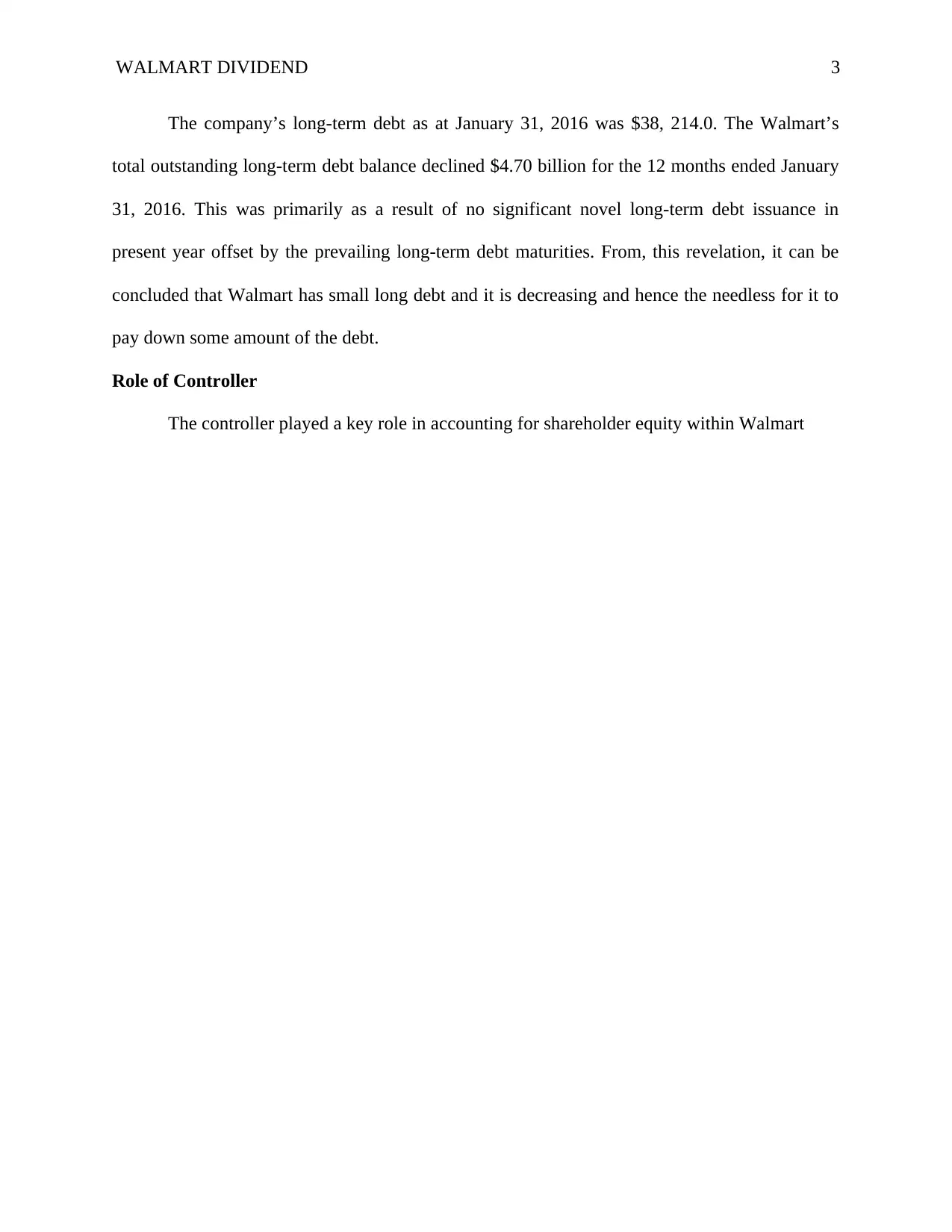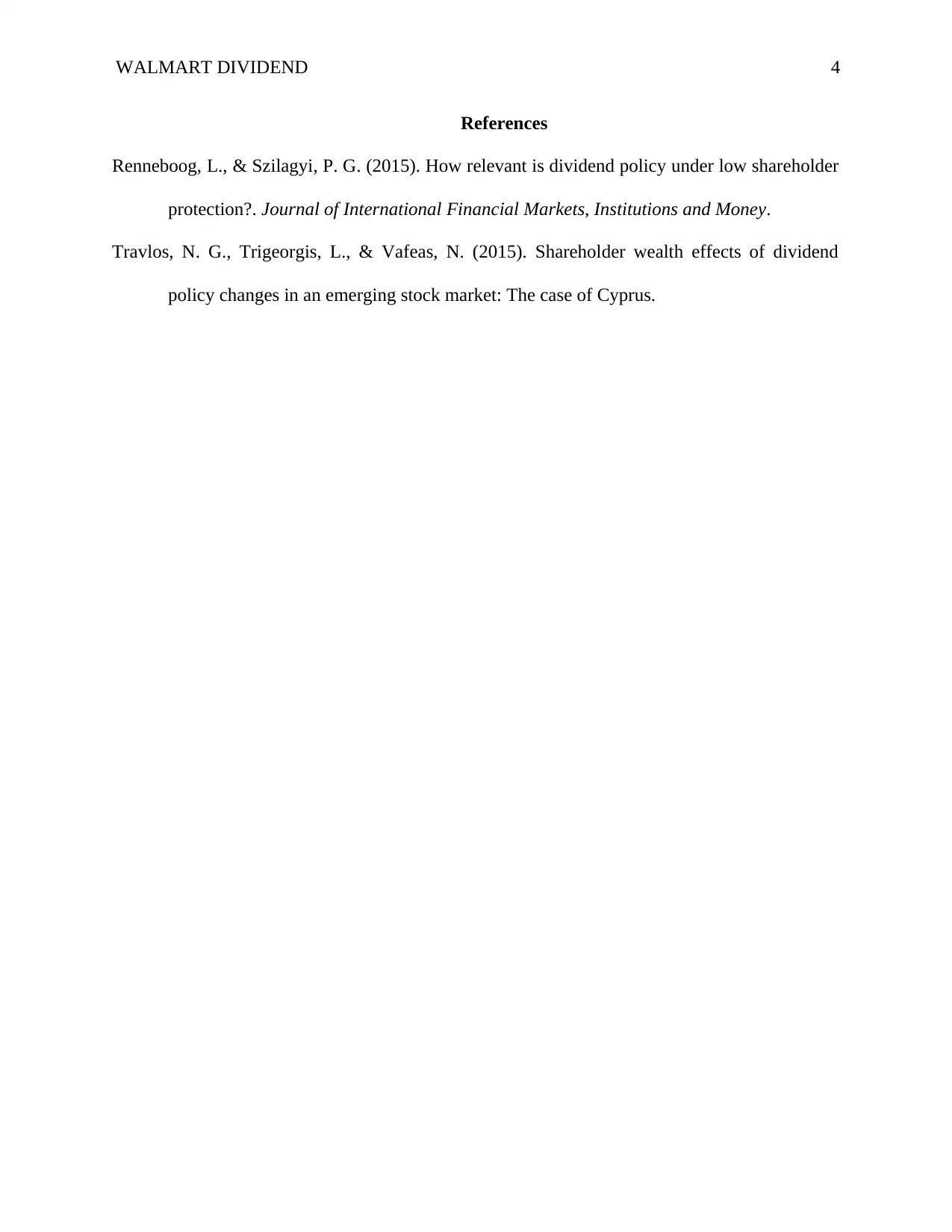Analysis of Walmart's Dividend Policy, Debt, and Controller Role
VerifiedAdded on 2020/03/16
|4
|487
|57
Report
AI Summary
This report provides a comprehensive analysis of Walmart's dividend policy, focusing on its stable dividend approach and the factors influencing it. The report examines Walmart's commitment to dividend payments, its classification as a dividend aristocrat, and the recent trends in dividend payouts. It also analyzes the company's long-term debt, highlighting the trends and implications for financial health. Furthermore, the report explores the role of the controller in accounting for shareholder equity within Walmart. The analysis draws upon financial data, including dividend payments and debt balances, and references academic research to support the findings. The report concludes with insights into the company's financial strategies and their impact on shareholders.
1 out of 4








![[object Object]](/_next/static/media/star-bottom.7253800d.svg)